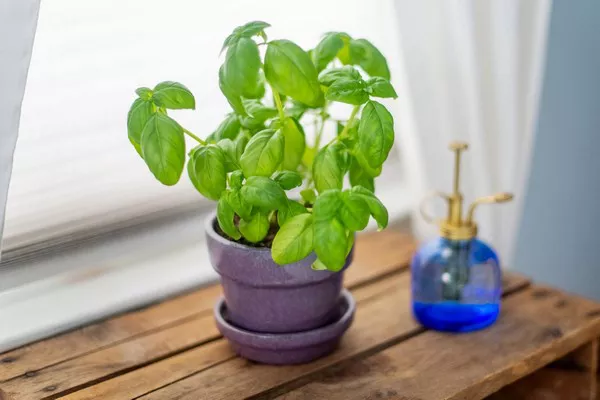Pests, those unwelcome intruders that disrupt the harmony of our living spaces, have a specific anatomy – a combination of factors that allows them to thrive and cause havoc. Understanding the essential components required to make a pest is crucial for effective pest management. In this comprehensive guide, we will delve into the intricacies of pest formation, exploring the four key elements that contribute to their existence and persistence.
1. Reproduction: The Genesis of Pest Populations
At the core of pest development lies the factor of reproduction. Pests are characterized by their ability to multiply rapidly, creating populations that can quickly overwhelm an environment. Whether it’s insects, rodents, or other nuisance organisms, prolific reproduction is a common trait. Insects, for example, often have a short reproductive cycle, allowing them to produce numerous offspring in a relatively brief period. This high reproductive rate is a fundamental aspect that contributes to the pest status of many organisms.
Understanding the reproductive habits of pests is crucial for effective pest control strategies. Insects, in particular, may employ various reproductive strategies such as oviparity (laying eggs), viviparity (giving birth to live young), or a combination of both. Rodents, on the other hand, are known for their rapid breeding capabilities. A single pair of mice, under favorable conditions, can produce dozens of offspring in a year. By comprehending the reproductive biology of pests, pest management professionals can implement targeted measures to disrupt their life cycles.
2. Access to Resources: Sustaining the Pest Population
The availability of resources is another critical component in the creation of a pest. Whether it’s food, water, or suitable shelter, pests thrive in environments where their essential needs are easily met. Human habitats often provide an abundance of resources, making them attractive to pests seeking sustenance and refuge. The ready availability of food scraps, standing water, and hiding spots in and around homes creates an environment conducive to pest infestations.
To mitigate the impact of resource availability on pest populations, it’s essential to adopt practices that limit their access to necessities. Proper waste management, sealing entry points, and eliminating standing water are effective measures. For example, in the case of cockroaches, denying them access to food sources and sealing entry points can significantly reduce their presence. By disrupting the resource base that sustains pests, individuals can create less hospitable environments, discouraging infestations.
See Also: What is the pest of an insect?
3. Adaptability: The Evolutionary Edge of Pests
Adaptability is a hallmark trait of pests that contributes to their persistence and resilience. Pests have a remarkable ability to adjust to changing conditions, whether it be environmental changes, introduction of new control measures, or evolving resistance to pesticides. This adaptability allows pests to overcome challenges and continue to thrive in various settings.
Insects, in particular, have demonstrated remarkable adaptability through the development of resistance to chemical pesticides. This phenomenon, known as pesticide resistance, occurs when a population of pests evolves to withstand the effects of a particular pesticide. The indiscriminate use of pesticides can accelerate this process, necessitating integrated pest management strategies that involve a combination of approaches to reduce reliance on chemical control.
Understanding the adaptability of pests is crucial for devising sustainable pest management solutions. By adopting an integrated approach that incorporates biological, cultural, and mechanical control methods alongside judicious pesticide use, pest management professionals can create a more resilient defense against evolving pests.
4. Environmental Conditions: The Habitat of Pests
The environmental conditions in which pests thrive play a pivotal role in their existence. Whether it’s the temperature, humidity, or availability of harborage sites, pests are highly attuned to specific environmental cues that influence their behavior and reproduction. Understanding the habitat preferences of pests is key to implementing targeted control measures.
For example, mosquitoes, notorious vectors of diseases, prefer breeding in stagnant water. Controlling mosquito populations involves eliminating standing water where they lay their eggs. Similarly, rodents seek shelter in areas with access to food and harborage, making proper sanitation and sealing entry points essential components of rodent control.
Environmental conditions can also influence the prevalence of pests in agricultural settings. Crop pests, such as aphids or caterpillars, are often influenced by factors like temperature and humidity, affecting their reproductive rates and feeding habits. Sustainable agricultural practices that consider these environmental factors can contribute to pest control without relying solely on chemical interventions.
Conclusion
In conclusion, the creation of a pest involves the intricate interplay of four essential components: reproduction, access to resources, adaptability, and environmental conditions. By understanding these components, individuals, pest management professionals, and policymakers can develop comprehensive strategies to mitigate pest issues effectively. Whether it’s implementing targeted sanitation measures, disrupting reproductive cycles, or adopting sustainable agricultural practices, a holistic approach is key to managing and preventing pest infestations. As we navigate the coexistence with pests, acknowledging and addressing these fundamental components provides a foundation for creating environments less conducive to their proliferation.


